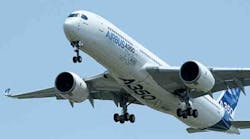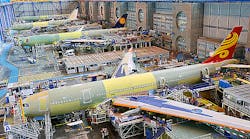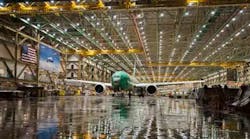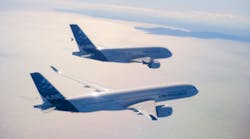Airbus Group highlighted growth expectations for the Latin America/Caribbean region in its latest 20-year Global Market Forecast, seeing demand for 1,784 single-aisle aircraft, 481 twin-aisle jet, and 29 very large aircraft (VLA) through 2033. The region’s cumulative demand should be worth $292 billion over the 20-year period, according to the OEM.
Like its rival Boeing, Airbus each year releases a 20-year forecast of global demand for its aircraft, citing relevant and developing trends. Overall, the Airbus’ Global Market Forecast (2014-2033) sees passenger traffic rising 4.7% annually requiring all together about 31,400 new passenger and freighter aircraft (100 seats and more) worth $4.6 trillion. The total number of passenger and freighter aircraft will rise from today’s 18,500 aircraft to 37,500 by 2033, an increase of nearly 19,000 aircraft. Over that time, 12,400 older, less-fuel efficient passenger and freighter aircraft would be retired.
Airbus sees economic growth in emerging markets (Asia, Latin America, Africa, and the Middle East) surpassing the current more economically developed regions of Europe and North America. For example, Asian middle class populations overall are expected to quadruple by 2033, while the global middle-class population will double from 33% to 63% of world population.
Another factor shaping demand is increased urbanization and wealth concentration in aviation mega-cities (i.e., destinations with more than 10,000 daily international long-haul passengers) worldwide will double, to 91. Airbus predicts these cities will be centers of wealth creation, with 35% of global GDP centered there, and more than 95% of all long-haul traffic going to, from, or through them.
In the, Latin American and Caribbean region, airlines will require 2,294 new passenger and freighter aircraft including 1,784 single-aisle, 481 twin-aisle, and 29 very large aircraft, worth an estimated $292 billion.
This regional expansion is shaped by overall trend toward greater urbanization, Latin America and the Caribbean becoming one of the world’s most urbanized regions in the world. The region’s GDP is currently growing at 3.9% per year, higher than the world average of 3.2% per year. Airbus sees the Latin America/Caribbean economy outperforming the global average in the next 10 years, and the middle-class population there growing over 40% from 278 million to 398 million people by 2033.
The growing economy and expanding middle class will drive regional air traffic to grow at a 4.9% average rate over the next 20 years, outperforming the world average of 4.7%. As a result, traffic flows within Brazil, between the U.S. and South America, and between Western Europe and South America will grow to be among the top 20 in the world by 2033.
Outpacing North America, Europe
For comparison, Airbus noted that currently nearly all of North America’s and Europe’s 20 largest cities connect passengers with at least one flight per day, but only 40% of Latin America’s top 20 cities do so. Also, presently the North American and European populations are the most willing to fly, taking 1.6 and 1.0 trips annually per capita, respectively, but by 2033 Latin Americans and Caribbeans will travel twice as much, and reach the levels that Europeans now exhibit. As a result, intra-regional and domestic traffic within Latin America and the Caribbean are seen tripling by 2033, a 5.6% growth rate that will form the largest market for Latin American carriers.
"In regards to long-haul market, while the top European and North American airlines carry nearly 40% of the traffic, the top airlines of Latin American and the Caribbean only carry 19%, foregoing valuable revenue to foreign competitors," stated Rafael Alonso, Airbus president for Latin American and the Caribbean. “This year, we are finally seeing Latin America carriers reposition themselves to capture international traffic, but huge potential remains for regional airlines to increase their market share on long-haul routes.”
"We are also seeing an increase in the region’s average aircraft size, a trend that validates our innovation investments to develop aircraft such as the A321 and the A350 XWB,” he continued. “The A350’s size, high efficiency and extra wide cabin will certainly help the region's airlines capture lost long-haul traffic."
The Latin American and the Caribbean region’s traffic growth is propelling the expansion of the region’s low-cost carriers (LCC). Currently, most of the region’s LCC traffic is concentrated in Brazil and Mexico, while the existing and future intra-regional and domestic traffic demand will spur LCC growth in Colombia and other markets throughout the region.
Airbus is forecasting Latin American airlines will continue to invest in new aircraft to maintain one of the youngest and most efficient fleets in the world. While the current average aircraft in the region 9.5 years old, aircraft operating in Latin America are 40% younger today than they were in 2000. On the other hand, the average aircraft age in the Caribbean is 15 years, more than five years older than the Latin America and world average.










